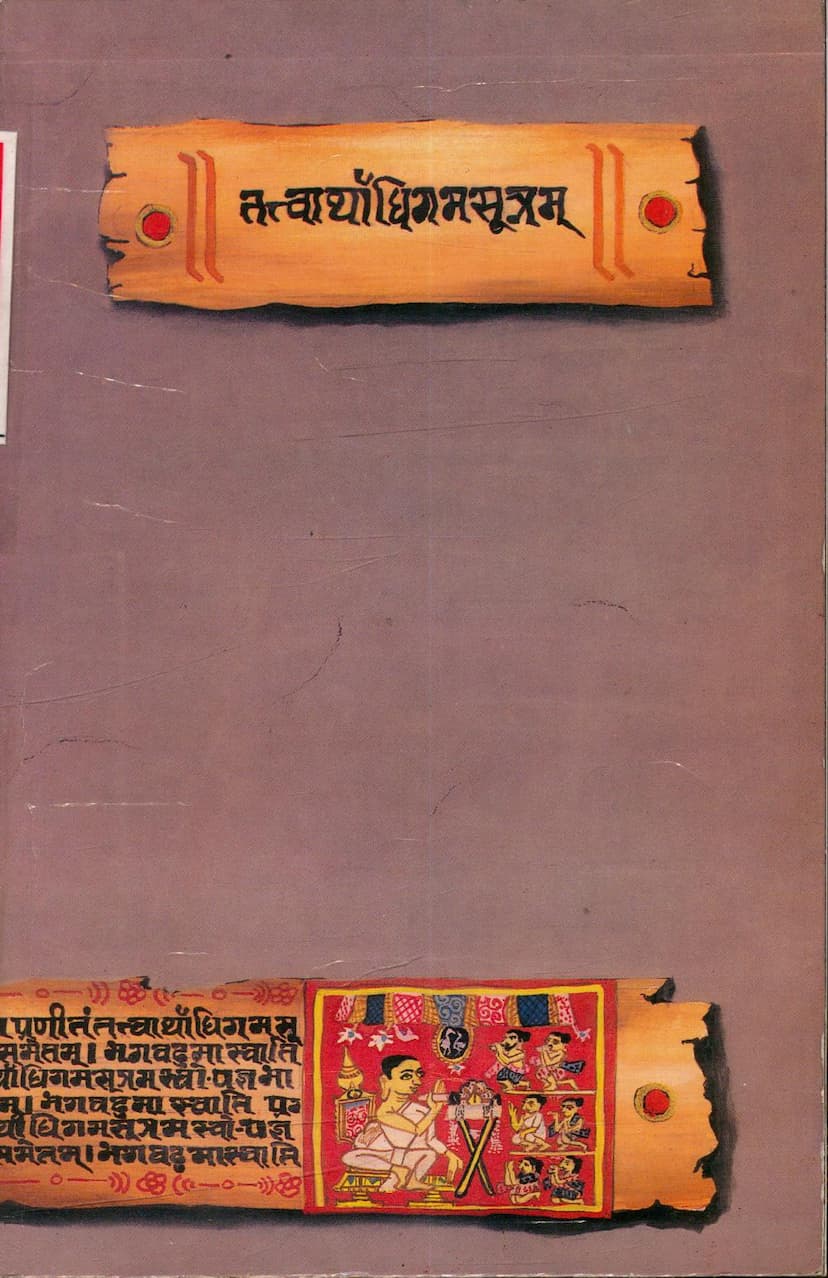Tattvarthadhigam Sutram
Added to library: September 2, 2025
Loading image...

Summary
This document is the Sanskrit text of the Tattvārthādhigama Sūtra, authored by Bhagavān Umāsvāti, along with his own commentary (svopajña bhāṣya). The text is presented in Devanagari script.
The provided pages cover the initial sections of the book, including:
- Title Page: Clearly states the title, author, and publisher.
- Editor and Publisher Information: Identifies Muni Prashamrativijaya as the editor and Ratnatrayi Aradhak Sangh as the publisher.
- Preface/Introduction (Anandakīyam): This section, likely a foreword or commentary by the editor or publisher, discusses the significance and profundity of the Tattvārthādhigama Sūtra, highlighting its potential to bring joy and spiritual understanding. It mentions that the original sutras are profound and the commentary (bhāṣya) is also essential for understanding. It also details the context of this particular publication, including the inspiration and guidance received.
- Presentation (Prastutih): This section offers a poetic description of the Tattvārthādhigama Sūtra, comparing it to a kāvya bandha (poetic composition) and highlighting its essence as the path to moksha (liberation). It praises the sutra for its depth, wisdom, and ability to convey the teachings of the Tirthankaras.
- First Chapter (Prathamo'dhyāyaḥ): This chapter begins by defining the Mokṣamārga (Path to Liberation) as composed of Samyakdarśana (Right Faith), Samyakjñāna (Right Knowledge), and Samyakcāritra (Right Conduct). It then elaborates on these foundational principles:
- Samyakdarśana (Right Faith): Defined as faith in the Tattvas (principles or realities). It explains that it arises either naturally (naisargika) or through learning (adhigama).
- Tattvas: Identifies the seven fundamental principles: Jīva (soul), Ajīva (non-soul), Āsrava (influx of karma), Bandha (bondage), Samvara (cessation of influx), Nirjarā (shedding of karma), and Mokṣa (liberation).
- Methods of Understanding (Nyāsa): Explains that the Tattvas can be understood through four methods: Nāma (name), Sthāpanā (representation), Dravya (substance), and Bhāva (state or disposition).
- Means of Knowledge (Pramāṇa and Nyāya): States that understanding these Tattvas is achieved through Pramāṇa (means of valid knowledge) and Nyāya (logic or reasoning). It mentions the two types of Pramāṇa: Parokṣa (indirect) and Pratyakṣa (direct). It also introduces the concept of Nyāyas (logical viewpoints) such as Naigama, Sangraha, Vyavahāra, Rjū sūtra, and Śabda.
- Analysis of Knowledge Types (Mati, Śruta, Avadhi, Manahparyaya, Kevala): The chapter proceeds to detail the different types of knowledge, their characteristics, their limitations, and how they are understood through Pramāṇa and Nyāya. It discusses the perception of sense-organs and mind (Mati-jñāna), scriptural knowledge (Śruta-jñāna), knowledge of distant objects (Avadhi-jñāna), knowledge of others' minds (Manahparyāya-jñāna), and omniscient knowledge (Kevala-jñāna). It also touches upon the concept of Viparyaya (fallacious knowledge).
The provided text appears to be a detailed scholarly edition, likely including the original Sanskrit sutras and the extensive commentary by Umāsvāti. The introduction and chapter outlines indicate a comprehensive treatise on Jain philosophy, focusing on the path to liberation. The extensive discussion of the Tattvas, Pramāṇas, Nyāyas, and types of knowledge suggests a deep dive into the epistemological and metaphysical aspects of Jainism.